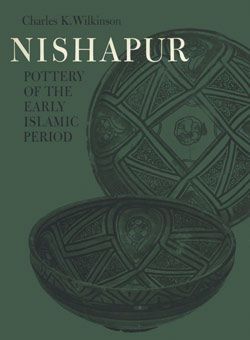Bowl with Black and White Geometric Decoration
This large bowl excavated from Nishapur is an example of the remarkable uses to which slip painting was put in eastern Iran during the tenth and eleventh centuries. This decorative technique, in which solutions of colored and semi-fluid clay called slips are used to coat earthenware vessels, was employed throughout the Islamic Near East but was particularly popular in greater Iran. Here, the reddish color of the earthenware body is completely masked by a coating of thick white engobe. On top of this, a simple geometric pattern was painted in another jet-black slip around the edge of the rim. A single black dot adorns the middle of the bowl at its base. The potter’s artful juxtaposition of black on white and the selection of rhythmic decorations that emphasize the bowl’s round form spoke to the sensibilities of collectors and archaeologists alike in the early twentieth century, making this type of ware one of the most popular among connoisseurs.
Due to rights restrictions, this image cannot be enlarged, viewed at full screen, or downloaded.


